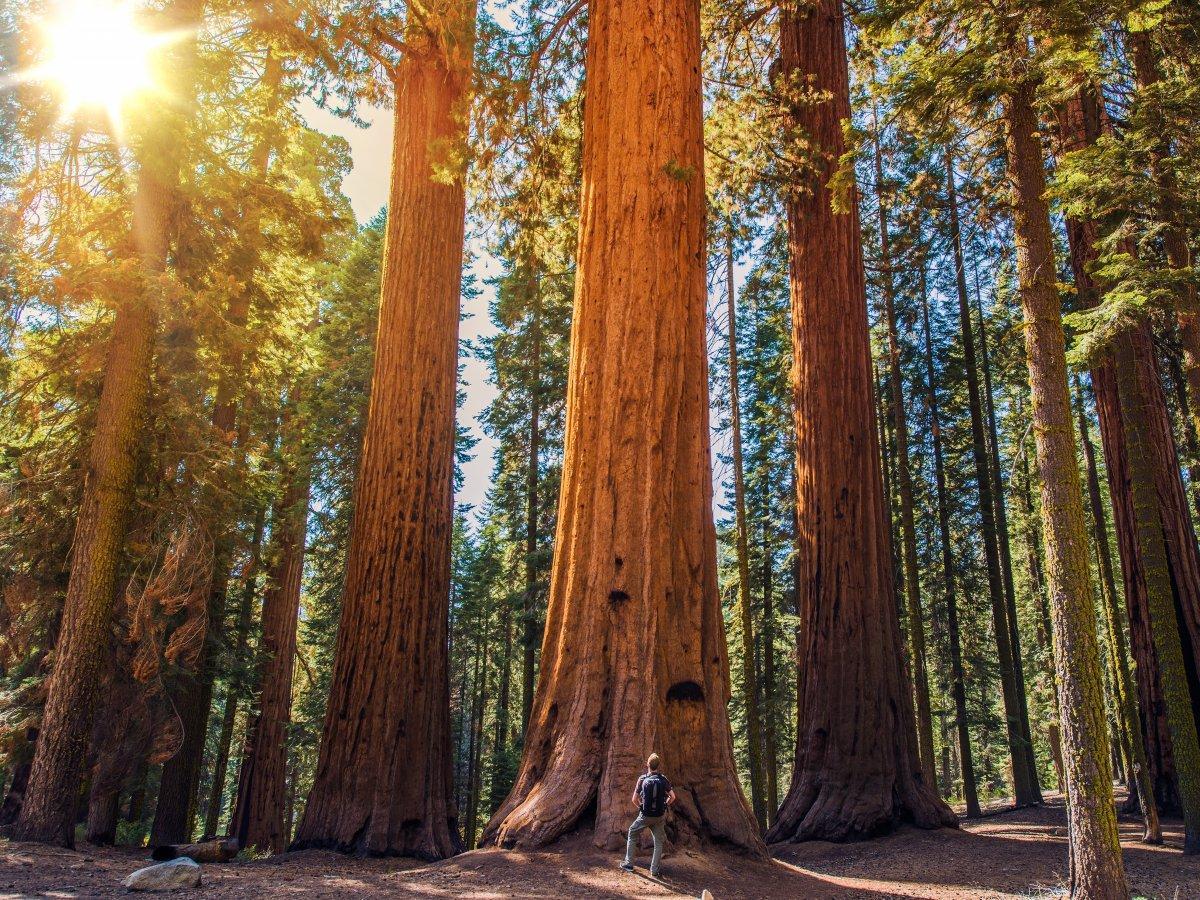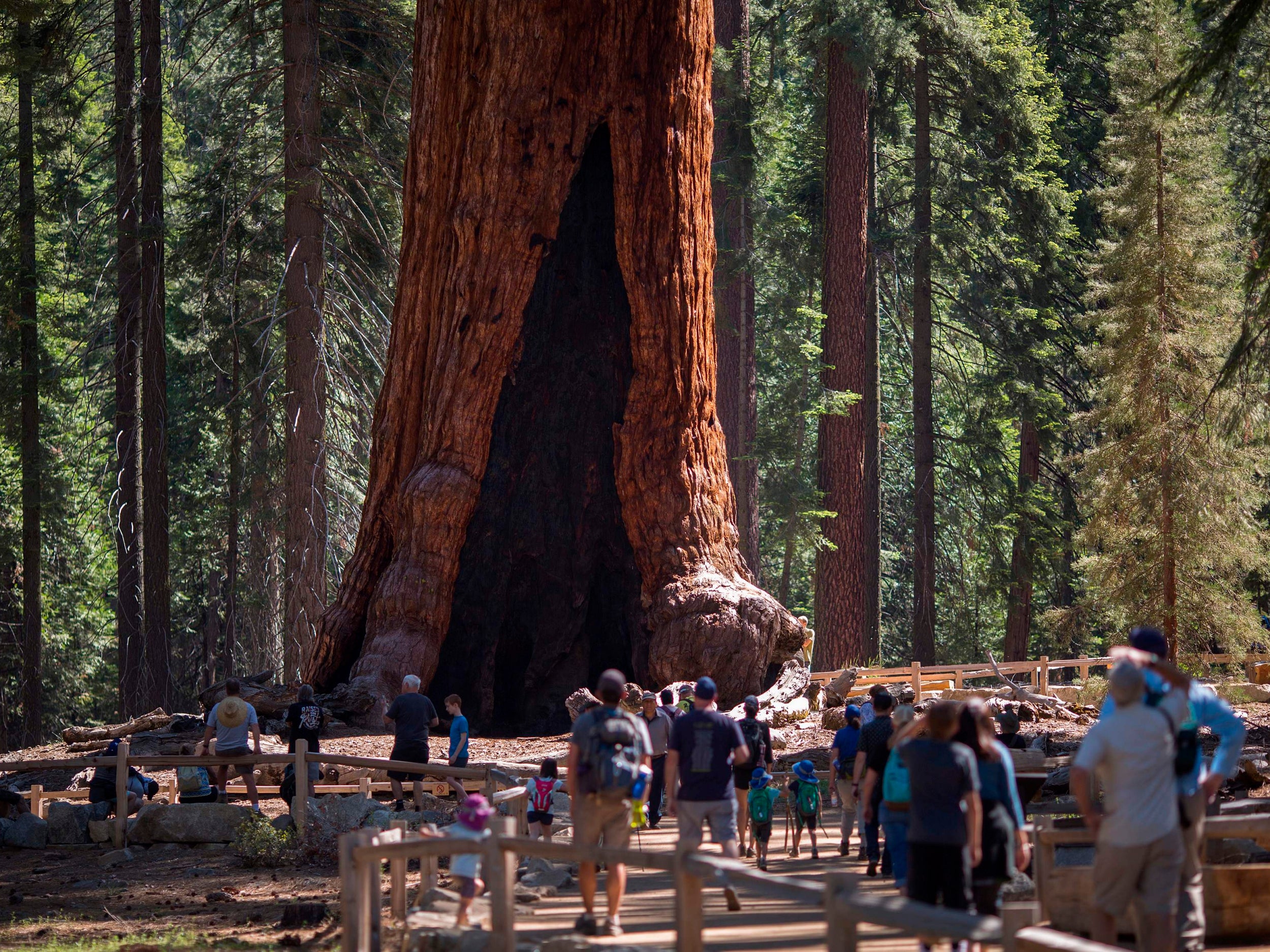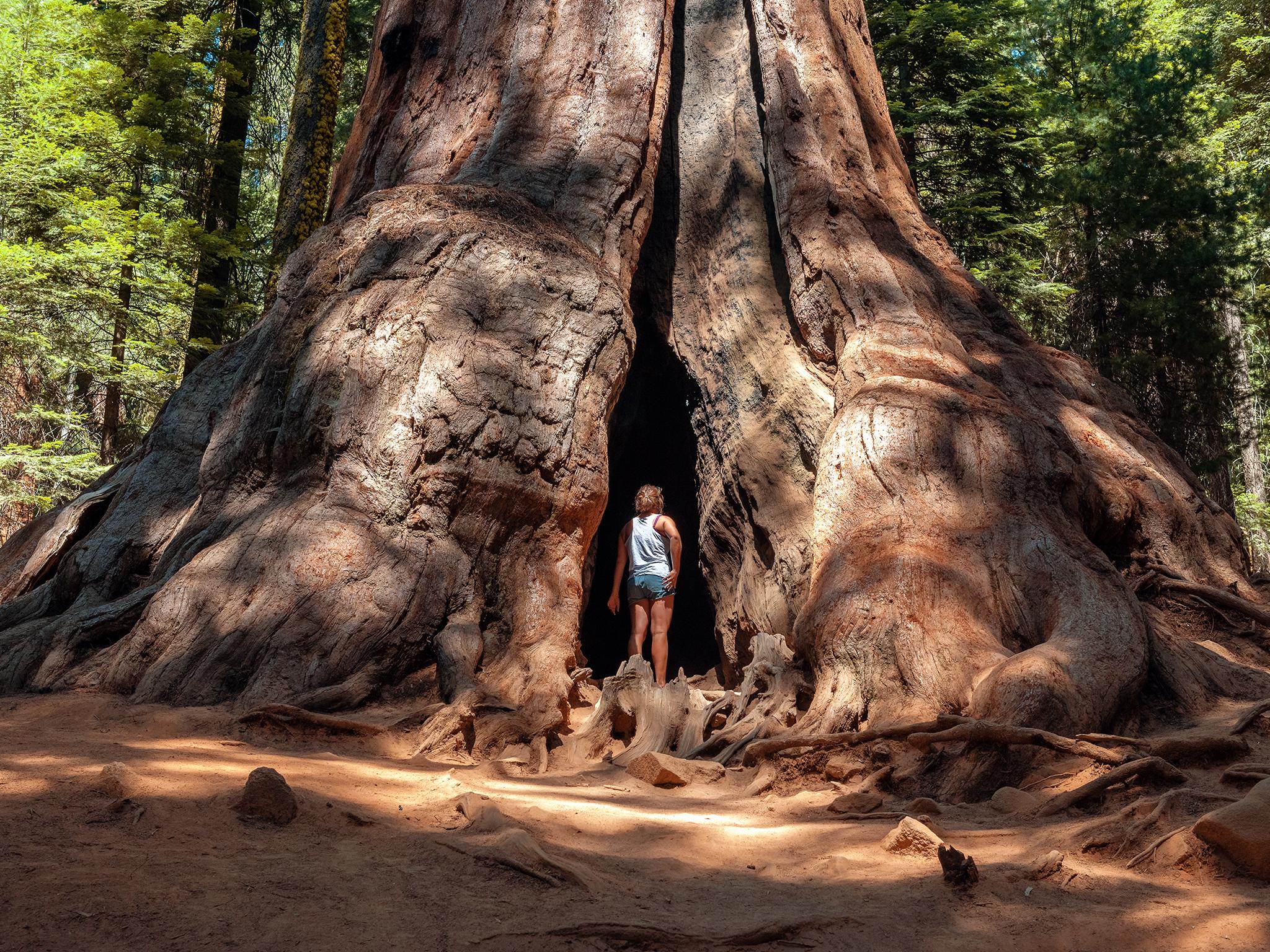A renewed view of some of the world’s oldest trees
After a three-year restoration project, Yosemite’s largest grove of giant sequoias has reopened, with less asphalt and more concern for the health of the trees

Your support helps us to tell the story
From reproductive rights to climate change to Big Tech, The Independent is on the ground when the story is developing. Whether it's investigating the financials of Elon Musk's pro-Trump PAC or producing our latest documentary, 'The A Word', which shines a light on the American women fighting for reproductive rights, we know how important it is to parse out the facts from the messaging.
At such a critical moment in US history, we need reporters on the ground. Your donation allows us to keep sending journalists to speak to both sides of the story.
The Independent is trusted by Americans across the entire political spectrum. And unlike many other quality news outlets, we choose not to lock Americans out of our reporting and analysis with paywalls. We believe quality journalism should be available to everyone, paid for by those who can afford it.
Your support makes all the difference.John Muir, the naturalist who was most at home sleeping outdoors on a bed of pine needles in the Sierra Nevada, called giant sequoias the “noblest of god’s trees”.
For three years, some of the most striking examples of these towering marvels were off limits to visitors in Yosemite National Park. After a $40m (£30m) renovation – the largest restoration project in the park’s history – the Mariposa Grove, a collection of around 500 mature giant sequoias, reopened last week.
What Muir called a “forest masterpiece” is now back on display.
The renovation addressed a problem that the park has struggled with for years. On the busiest summer days, more than 7,000 cars may converge on the park, which is about a four-hour drive from San Francisco.
The gridlock they create amid the stunning chutes of water running down the steep granite slopes of Yosemite’s glacier-carved valley results in a kind of drive-by naturalism that frustrates many.
In the Mariposa Grove, which is a 45-minute drive from the Yosemite Valley floor, the traffic brought exhaust fumes and engine noise to the foot of some of the world’s oldest living things. Park rangers feared that the asphalt covering the root systems of the trees could damage them.

One of the trees in the grove, the Grizzly Giant, a massive, battered and gangly sequoia, is estimated to be 1,800 years old (“plus or minus a few centuries”, according to the National Park Service).
Early last week, just a few days before visitors were welcomed back into the grove, a deer was calmly enjoying the shade of the trunk, which measures nearly 100 feet in circumference, one-third of a football field’s length.
Partly financed with a $20m gift from the Yosemite Conservancy, a private philanthropic organisation, the renovation involved ripping up nearly 1½ acres of pavement near the trees where cars and trams would pass and replacing it with walking paths made of packed dirt held together with resin.
Visitors are now encouraged to take a free shuttle bus from a new parking lot a 10-minute drive away (there is still some accessible parking for disabled visitors at the grove itself). The clanging, smoke-spewing diesel trams that previously took visitors on a tour of the grove have been removed.
“We are not trying to take away anyone’s freedom,” says Scott Gediman, a spokesman for the park. “Take your car, but then park it. And walk.”
With bark that can be more than 1 foot thick and high levels of tannins to repel insects, giant sequoias are regarded by experts as some of the world’s most resilient trees.
Close to 130 million trees of other species died in California over the past decade after being weakened by a five-year drought, but no mature giant sequoias perished, according to Sue Beatty, a restoration ecologist who helped lead the project.
The whole idea of, ‘Here’s an attraction, let’s build a parking lot next to it’ – we’re not doing that any more
Even so, Beatty and other experts said they saw some signs of stress in the sequoias.
Giant sequoias do not have a central taproot. Instead, they develop a shallow network of roots, around 3 feet deep, that spreads as far as 200 feet from the trunk, Beatty says. The asphalt and the trampling feet of visitors in the grove were making the trees more vulnerable.
“This project was all about the trees,” she says. “We wanted to improve their survivability in the time of a changing climate.”
In the main viewing areas, the trees are cordoned by pine fences, although visitors can get up close to the trees in the upper parts of the grove. Culverts were torn up and creeks and wetlands were restored.
This project was all about the trees. We wanted to improve their survivability in the time of a changing climate
Frank Dean, a former park ranger who is head of the Yosemite Conservancy, describes the renovation of the grove as part of an evolution in the way Americans approach the west: from conquest and discovery to preservation.
Early visitors to the Mariposa Grove bored through at least one giant tree, which today is aptly called the California Tunnel Tree. Visitors can still walk through the trunk.
“There’s a greater understanding of how special – and how fragile – it is,” Dean says of the flora and fauna in the park. “Society has evolved. It’s a lighter-on-the-land approach.”

Yosemite receives around 5 million visitors a year. The park is balancing its mission to attract visitors with a need not to be overwhelmed by them, says Gediman, the ranger.
“The whole idea of, ‘Here’s an attraction, let’s build a parking lot next to it’ – we’re not doing that any more,” he says.
Yosemite isn’t finished with parking lots: a new one for the Mariposa Grove shuttle terminal holds 300 cars. But they are being built farther from the park’s most stunning attractions.
Muir, whose writings helped alert Americans and the world to the beauty of Yosemite and the importance of preserving it, would probably be put off by the crowds of today.
But he would recognise his favourite trees, which he described as immortal and which look very much the way he saw them 150 years ago.
“These colossal trees are as wonderful in fineness of beauty and proportion as in stature – an assemblage of conifers surpassing all that have ever yet been discovered in the forests of the world,” he wrote. “Here indeed is the tree-lover’s paradise.
© New York Times
Join our commenting forum
Join thought-provoking conversations, follow other Independent readers and see their replies
Comments